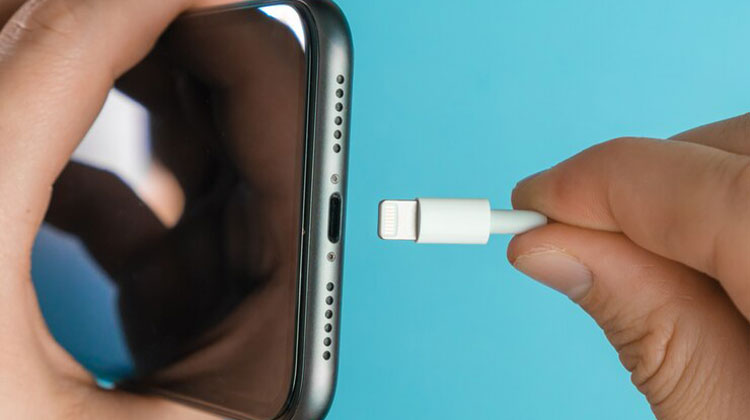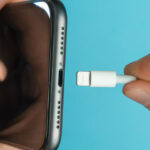Have you experienced issues with your iPhone’s charging port before? They can range from slow charging speeds to complete power loss, negatively affecting performance and ease of use, so how do we fix iPhone charging ports to ensure effective charging? In this article, we’ll look into common causes behind iPhone charging port not working and provide solutions, plus provide tips to maintain good condition charging ports.
Why is My iPhone Charging Port Not Working?
Before seeking solutions for an iPhone charging port not working properly, it’s essential to establish the root causes. Here are a few likely culprits to look out for.
Physical Damage
Damage to an iPhone charger port could prevent it from charging properly, leaving mobile phone owners frustrated and physically compromised by dropped devices that cause physical or mechanical harm to its charging port. Depending on its shape and use, physical damage could be to blame if your iPhone charger doesn’t sit correctly. Checking for obvious evidence of damage could help verify any suspicions that arise.
Dirt and Debris
Your iPhone’s charging port may become blocked with dust and other small particles over time, leading to malfunctioning charging. Maintaining optimal functionality of a charging port relies on routine cleaning using compressed air cans or soft-bristle brushes will remove debris without risking harm to its delicate internal mechanisms.
Also read: Why Is My iPhone Not Ringing? Troubleshooting Guide 2025
Use of Non-Certified Accessories
Using cables and chargers that Apple has not certified may cause damage to charger ports. Accessories not approved by Apple may not conform to your iPhone specifications and can cause connection problems and port damage, potentially endangering both security and functionality. Therefore, only use accessories that comply with its specifications to guarantee proper use and functionality of your charger port.
How to Fix iPhone Charging Port Not Working
If your iPhone has problems with its charge port, there are many actions you can take to identify and possibly fix to iPhone charging port not working issue.
Inspect and Clean Your Charging Port
Carefully examine your iPhone’s charging port to detect dust, dirt, or any debris that might obstruct its function. Over time, dust could build up in its depths and block communication between the cable and the device. Using either an air compressor or a soft toothbrush ensures any buildup of debris can be cleared from its way, and you may discover this can often resolve charging port not working issues caused by an obstructed port.
Always use official Charging Cables and Chargers
Your adapter and charging cable are integral in providing electricity to your device, and should be free from damage. Check them periodically to detect signs of potential trouble before purchasing one. Damaged devices can cause intermittent charges or slow ones. To eliminate these issues, try another collection of charging accessories that have been approved by Apple or trusted charging accessories for wireless iPhones.
Restart Your iPhone
Restarting your iPhone may be the quickest and easiest solution to charging difficulties, as software glitches could be impeding its operation. Simply switch off and leave it for some time before turning it back on again. After your phone has powered back on, try charging it again to see if any issues show.
Update iOS
Keeping your iPhone software updated can help ensure seamless charging experiences. Updates often include bug fixes and performance enhancements that enhance system functionality.
Also read: Why Is Face ID Not Working on iPhone? Quick Fixes
Reset Settings
If restarting and updating software do not resolve the charging problem on your iPhone, try resetting its device settings. Resetting can often help clear away hidden software glitches that might be contributing to it. Just remember that doing this will restore all settings to default. You might need to re-adjust your preferences afterward.
Contact Apple Support
If none of these solutions work, professional assistance should be sought out. Apple Support offers expert guidance for troubleshooting devices and offering repairs. They may suggest sending it for service immediately or suggest taking your device to a repair shop. If necessary, they’ll offer solutions that can restore charging capabilities to your iPhone.
Conclusion
Problems with charging ports can be frustrating, but with the appropriate knowledge on how to resolve an iPhone charging port not working efficiently, your iPhone should remain fully charged and functional for everyday life. When using accessories carefully, use only reliable, certified chargers. Following this thorough guideline can ensure your iPhone remains fully charged so it’s ready for anything the day may bring!
FAQs: iPhone charging port not working
How do I know if my iPhone charging port is damaged?
If your cable feels loose, your phone charges only at certain angles, or doesn’t respond at all — the port may be damaged.
How much does it cost to fix an iPhone charging port?
The cost can range from $60 to $150, depending on your iPhone model and whether you’re covered by AppleCare+.
Can a damaged charging port cause slow charging?
Yes. A damaged or loose iPhone charging port can interrupt power flow, causing slow or inconsistent charging. It may also make your iPhone stop charging randomly.
How can I fix a slow-charging iPhone?
First, clean the charging port gently using a soft brush or compressed air. Then, try another certified cable and adapter. If your iPhone still charges slowly, check for iOS updates or reset your settings.
How can I fix a slow-charging iPhone?
First, clean the charging port gently using a soft brush or compressed air. Then, try another certified cable and adapter. If your iPhone still charges slowly, check for iOS updates or reset your settings.















Leave a comment